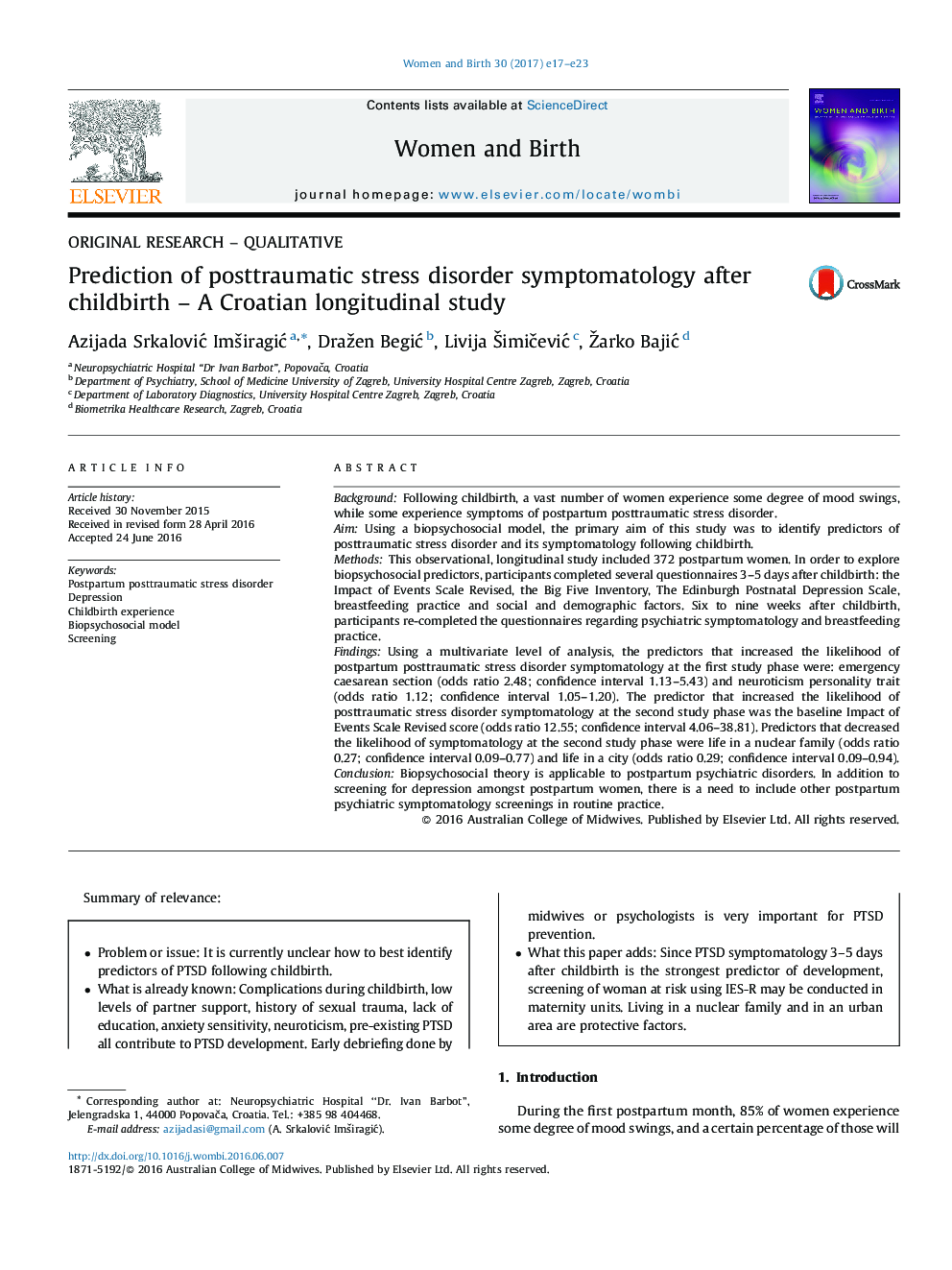| Article ID | Journal | Published Year | Pages | File Type |
|---|---|---|---|---|
| 5566020 | Women and Birth | 2017 | 7 Pages |
BackgroundFollowing childbirth, a vast number of women experience some degree of mood swings, while some experience symptoms of postpartum posttraumatic stress disorder.AimUsing a biopsychosocial model, the primary aim of this study was to identify predictors of posttraumatic stress disorder and its symptomatology following childbirth.MethodsThis observational, longitudinal study included 372 postpartum women. In order to explore biopsychosocial predictors, participants completed several questionnaires 3-5 days after childbirth: the Impact of Events Scale Revised, the Big Five Inventory, The Edinburgh Postnatal Depression Scale, breastfeeding practice and social and demographic factors. Six to nine weeks after childbirth, participants re-completed the questionnaires regarding psychiatric symptomatology and breastfeeding practice.FindingsUsing a multivariate level of analysis, the predictors that increased the likelihood of postpartum posttraumatic stress disorder symptomatology at the first study phase were: emergency caesarean section (odds ratio 2.48; confidence interval 1.13-5.43) and neuroticism personality trait (odds ratio 1.12; confidence interval 1.05-1.20). The predictor that increased the likelihood of posttraumatic stress disorder symptomatology at the second study phase was the baseline Impact of Events Scale Revised score (odds ratio 12.55; confidence interval 4.06-38.81). Predictors that decreased the likelihood of symptomatology at the second study phase were life in a nuclear family (odds ratio 0.27; confidence interval 0.09-0.77) and life in a city (odds ratio 0.29; confidence interval 0.09-0.94).ConclusionBiopsychosocial theory is applicable to postpartum psychiatric disorders. In addition to screening for depression amongst postpartum women, there is a need to include other postpartum psychiatric symptomatology screenings in routine practice.
